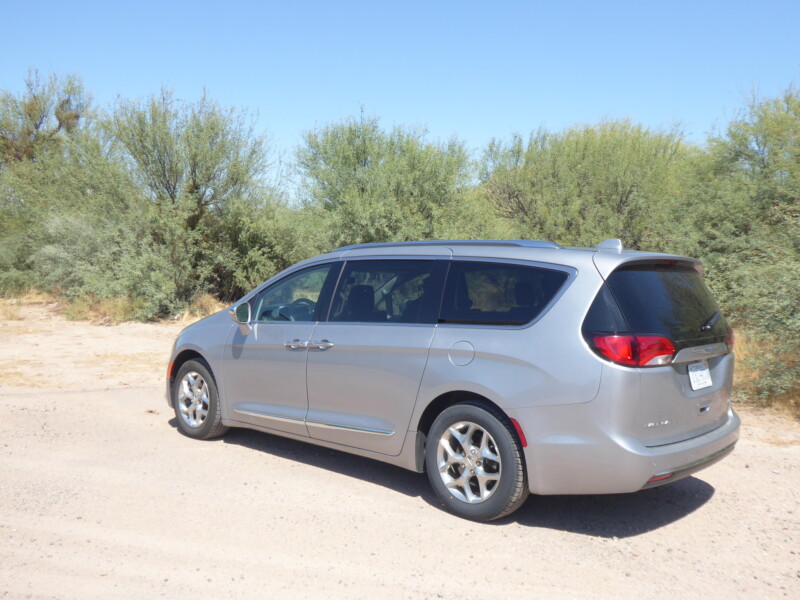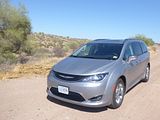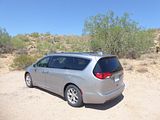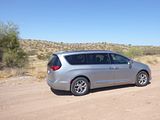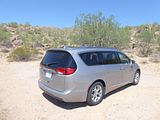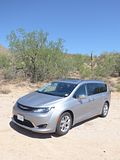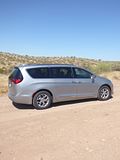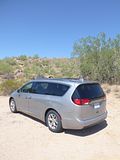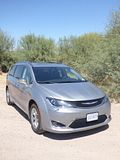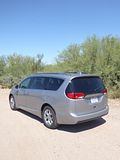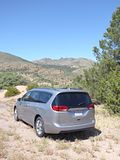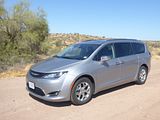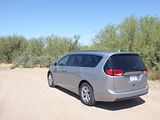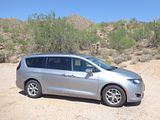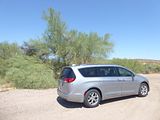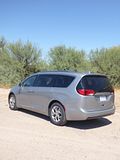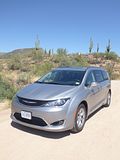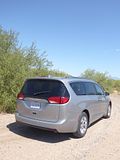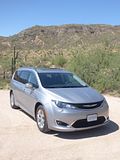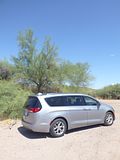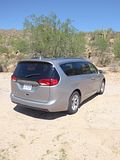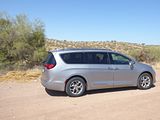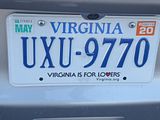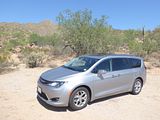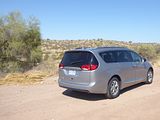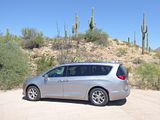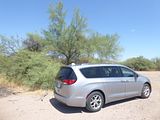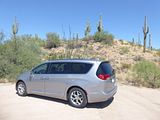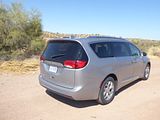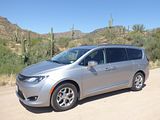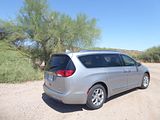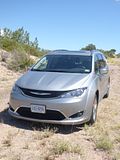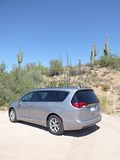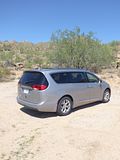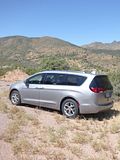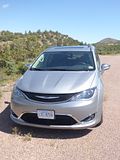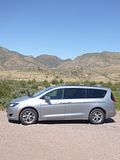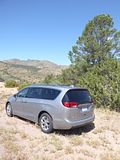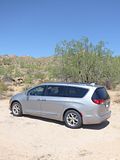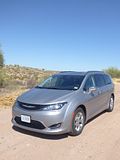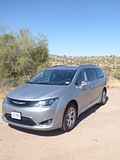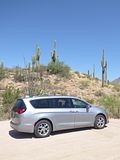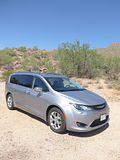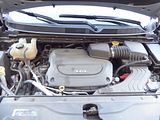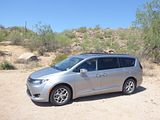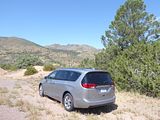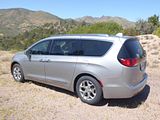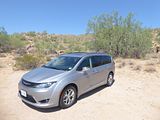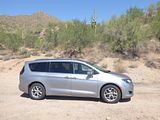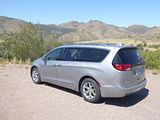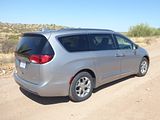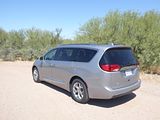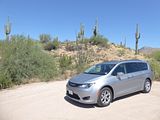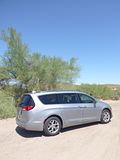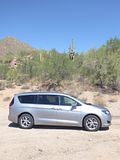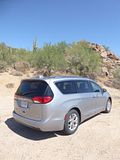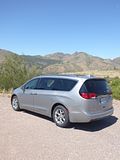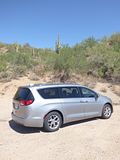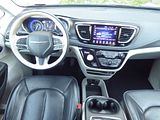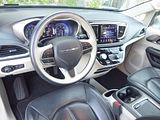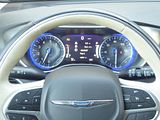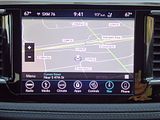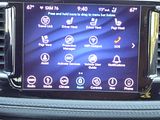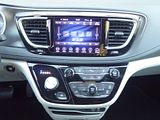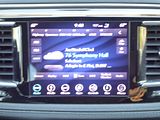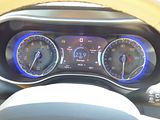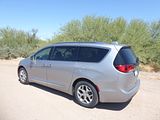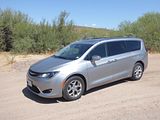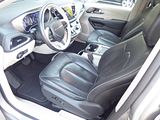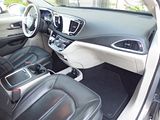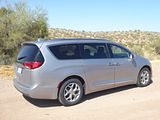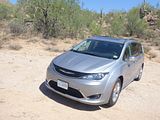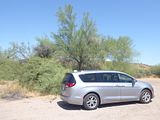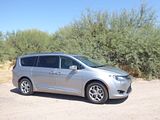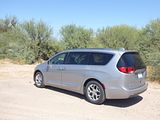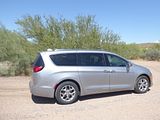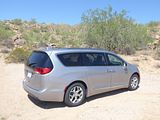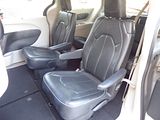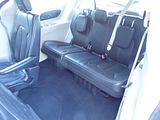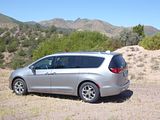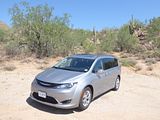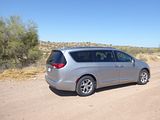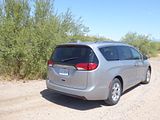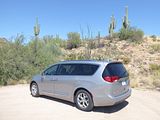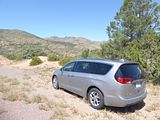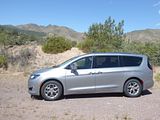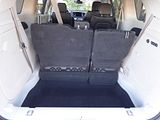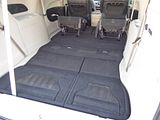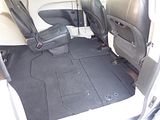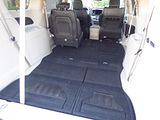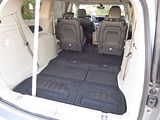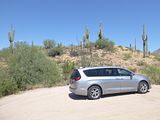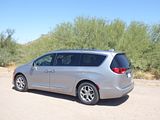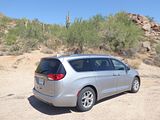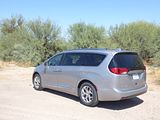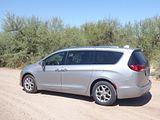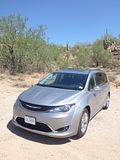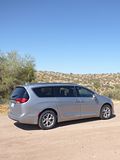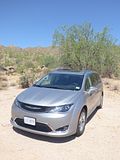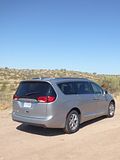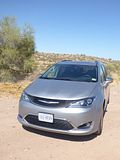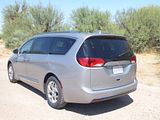Most people will agree that it was the Chrysler Corporation, as the company was called at the time, that pioneered what the Americans have come to call the MiniVan and Europeans, the MPV with the launch in the autumn of 1983 of the Plymouth Voyager. The car was an instant hit, offering more versatility than the traditional station wagon or estate car, and was more car like to drive than converted versions of full-sized vans which had previously been the only way to accommodate lots of people and luggage. Rivals quickly followed, on both sides of the Atlantic. Whilst in Europe the concept was then applied to multiple different sizes of car, with the way led by Renault following up their Espace with the Scenic and later the even smaller Modus, but in America, the MiniVan remained a large vehicle typically with seating for 7 or 8 people and space for a decent amount of luggage. By the early twentieth century almost all the mainstream brands had an offering. Practical these cars were, but fashionable and trendy they were no, so when the Crossover started to emerge as yet another new sector, offering almost as much space but with a more sporting image (it’s a relative term, though SUV did originally denote “Sport” in the full version of the acronym), many buyers transferred their allegiance away from the MiniVan. Some manufacturers have persisted with the formula, though, among them Chrysler who have now produced several different generations of their once pioneering product. The latest iteration was announced in January 2016 at the North American International Auto Show in Detroit and this time, it was only offered as a Chrysler. Rather being called Town & Country as previous generations had been known, it adopted the Pacifica name, which had last been seen on a now largely forgotten 7-seater crossover a few years earlier. One reason for the change was that the preceding Dodge Grand Caravan, dating all the way back to 2007, was planned to remain in production for another few years, sold at a lower price point allowing the Pacifica to be pushed somewhat up-market and sold for a higher price. That meant that although the Pacifica went on sale later in 2016 as a 2017 model year car, it did not appear in the rental fleets in the volumes that had been the case for its predecessor. But cars did start to build up on fleet and Hertz have certainly had them for quite a while now. When I am renting cars in the US, I have absolutely no need for the passenger carrying capacity or space of one of these vehicles, so they don’t tend to be high on the list of cars that I seek out, but I am always interested to try one when I can. There are times, such as holiday peaks, when every single MiniVan is booked out but there are also times when demand for them is far lower than the number of them on fleet which means that they get put in Presidents’ Circle and Five Star areas of the rental car facility and that was the case here. On yet another night at the Phoenix Sky Harbor Hertz facility when there were not many cars available, this 2018 Pacifica stood out as one of few cars on offer that I had not previously sampled. Although it bore a few signs of a hard rental car life, I decided to take it, to see whether this is indeed the current MiniVan class leader as many had told me is the case or whether it would prove to be a car to avoid unless you really need the full carrying capacity.
With the exception of the Hybrid models, every Pacfica features the same 3.6 litre V6 engine. It is the same unit as you will find in some versions of the Dodge Charger and Challenger as well as the Chrysler 300 and some Jeeps, though it is not as potent here as it is in most of those cars. You get 276 bhp and there is a standard 9 speed automatic gearbox. The engine has impressed me in its other applications and that’s also the case here as it is both smooth and refined and despite the reduction in output compared to a Charger, it is still potent enough to give the Pacifica decent performance. You sometimes need to press the throttle quite hard to wake it up, or rather to wake the gearbox up, but once you do, there is strong acceleration and the car feels like it has sufficient power for everyday motoring. Indeed the quoted acceleration times for 0 – 60 mph are surprisingly rapid for a car of this type. Once underway, overall noise levels are low, with not just the engine but any interference from the road or the wind also well suppressed. There is a Stop/Start system and this works well. I covered 158 miles during the day in which I had the car and put 6.78 gallons in to fill it up, which computes to 23.3 mpg US or 27.48 mpg Imperial. The car’s trip computer declared 25.0 mpg and as these units tend to be pretty accurate these days, that would suggest that I returned the car with a little more fuel in it than was there when I received it.
MiniVans are not really the type of vehicle that you expect to be good to drive, with a sporting feel and agility generally not high on the priority list as they are developed. And the Pacifica does not deviate far from this expectation, really. There is a nice chunky steering wheel, but the system it controls is generally light and does not have that much in the way of feel. As long as you do not push the Chrysler too hard, all will be fine, as the handling is tidy and there appears to be a good level of grip, though this relatively tall vehicle does exhibit a certain amount of body roll from event quite modest speeds. It comes on 235/60 R18 wheels, which are about as high profile as you find these days. With suspension optimised for comfort, the car rides quite nicely, with a smoothness on most surfaces that makes this a car a worthy companion for a long haul on straight-ish roads. The brakes worked well, with no issues that I could discern, offering short stopping distances from even a moderate pressure on the pedal. The combination of a slightly raised driving position and a generous glass area means that all-round visibility is good and to help out there are all-round parking sensors and there is a rear park assist feature. That glass area makes the cabin feel airy and this is enhanced by the fact that there is are two separate sunroofs. They feature an electric cover if you want to stop the cabin getting extra hot while the Chrysler is parked up on a warm day.
Chrysler products used to suffer from well below par interior quality but that all changed a few years ago and these days most of them are about the best you will see, certainly from the US domestic manufacturers, but also well up to par against the Asian brands as well. The Pacifica continues that trend, The test car was a top of the range Limited model which means it looks almost posh. I was not entirely convinced that the oatmeal colouring would prove practical in extended family use, but it does make the interior feel lighter and more airy than would be the case if the car had been black inside. There is plenty of leather in evidence here with a nice chunky leather wrapped material being one of the first things you notice. There is a pleasing simplicity to the dash and the dials, though these do feature quite an array of colours, with dark blue, turquoise and yellow all featuring. Two large dials for the speedometer and rev counter and complemented by separate fuel level and water temperature gauges in the centre of the cluster. All are easy to read. There are twin column stalks, a change from former Chrysler Group practice, though the lights which include an Auto function, still operate from a dial on the dash to the left of the wheel. The steering column boss includes audio repeater and cruise control buttons. The centre of the dash includes a neatly integrated colour touchscreen for Chrysler’s deservedly praised uConnect system. There are lots of menus to navigate in this one, as most of the functions you need for the audio system are only available through a screen interface. The system includes XM Satellite radio and on the trim of the test car, navigation, as well as Android Auto and Apple Car Play and 4G LTE Wifi. Beneath it there are buttons for the tri-zone climate control. and alongside these, on the angled surface of the dash is the fashionable cylindrical gear selector which proved easy enough to use. The switch for the electronic handbrake is alongside, leaving the centre console area solely for putting things like cups and mobile phones and other odds and ends.
As befits the top of the range status of this Pacifica Limited model, the seats are trimmed in a perforated leather and they are electrically adjustable. They feature both heating and cooling. With a wide range of adjustment of the seats as well as a telescoping steering column, it was easy to get the driving position I wanted. You do sit somewhat higher than you would in a regular sedan, which means there is that commanding feel to the driving position. There’s also a feeling of space with masses of headroom and the passenger seat being some way from that of the driver. The seat itself proved comfortable.
The middle row of seats in this version are captain’s chair style separate seats, set apart from each other, with armrests on either side of each seat. There’s a real feeling of space here, with masses of headroom, and more than enough accommodation for those who are far longer of leg than me. The seats have their own individual adjustment for the backrest, but you can’t slide them forward and back, their position being fixed. Those who sit here have their own USB ports, and can stow odds and ends in nets on the back of the front passenger seats as well as pockets on the doors and a pull-out drawer. There is good space for three people to sit in the rearmost row, too, though adults may find things a bit on the tight side. Getting in requires moderate agility, though the Pacifica is easier in this respect than any of the 7-seater Crossover type vehicles. Once installed, there is a bench seat, split asymmetrically, which offers plenty of headroom as well as enough legroom and the seats are mounted high enough that your knees are not that close to your chin. Again the seat cushion position is fixed but you can alter the backrest angle. There are cup holders and storage recessed moulded into the side panels. When the seats are not folded down, there are deep cubbies under the floor which, although a little awkward to access could hold quite a few further items that would otherwise roll around the cabin.
The tailgate is massive and it is heavy, but thankfully on this version, it is electrically assisted, making opening and closing it literally the push of a button. Even with all the seats in position, there is plenty of boot space, even though the empirical figures say that this is a bit smaller in this respect than any of its rivals. The trick is that the luggage area is very deep, so as long as the cargo you have is boxy in nature and can be piled up, then plenty will fit in here even before breaching the window line. More space is created by gradually folding the seats down, which is also easy, as they are electrically powered. Chrysler’s much praised “Stow N Go” features, which means that the seats fold down into the floor leaving a completely flat load bay, which is big with the third row of seats folded away and truly gigantic if the middle row have also been lowered. The only slight issue is that the central seat belt gets in the way somewhat. Just in case this is not enough, the Pacfica features roof rails. Inside the cabin there are plenty of places for odds and ends. The glovebox lid is huge and promises a much bigger capacity than is the reality, but there are also plenty of other places for bits and pieces. there are bins on the doors and there is a deep cubby under the central armrest, In front of this, lower down is a large lipped stowage area at the base of the dashboard. There is a smaller area higher up than this in front of the twin console-located cupholders and there are also pull out drawers on the lower part of the dashboard.
The 2018 Chrysler Pacifica comes in six main trim levels: L, LX, Touring Plus, Touring L, Touring L Plus and Limited. The naming can be a little confusing but, as expected, the more expensive the trim level, the more standard features you get. There’s also a Pacifica Hybrid. Every Pacifica gets the same engine: a 3.6-litre V6 287 bhp and 262 lb/ft of torque that sends power to the front wheels via a nine-speed automatic transmission. Seven-passenger seating is standard across the board, and eight-passenger seating is optional on all but the L model. The base L trim level comes standard with 17-inch steel wheels, heated mirrors, keyless entry (for the driver door only) and ignition, a rearview camera, blind-spot monitoring, rear parking sensors, rear cross-traffic alert, dual-zone climate control, a height-adjustable driver’s seat, a 60/40-split folding third-row seat, a 7-inch touchscreen, Apple CarPlay and Android Auto, Bluetooth, and a six-speaker audio system with a USB port and an auxiliary jack. Tri-zone climate control is available at an additional cost. The Pacifica LX is equipped with alloy wheels, automatic headlights, body-coloured exterior trim, a driver information display, an automatic engine stop-start system, an eight-way power driver seat (with four-way lumbar), tri-zone climate control and folding/collapsible second-row Stow ‘n Go seats. Stepping up to the Touring Plus adds foglights, LED taillights, chrome exterior trim, full keyless entry, remote engine start, power-sliding rear doors, a power liftgate, automatic climate control, satellite radio and a charge-only USB port located in the front row. The 18-inch wheels can be ordered separately. The next level up is the Touring L. Its standard features include an eight-way power passenger seat with power lumbar adjustment, heated front seats, leather upholstery, and second- and third-row retractable sunshades. There are several packages available for the Touring L. The Premium Audio package adds a 13-speaker audio system and an 8.4-inch touchscreen with HD radio and two USB ports. The Advanced SafetyTec package (available on the Touring Plus and up) bundles automatic high-beam control, front parking sensors, a sound-reducing windshield, automatic wipers, lane departure warning, blind-spot monitoring, adaptive cruise control, forward collision warning with automatic emergency braking, an automated parking system, a top-down parking camera and a larger driver information display. The upgraded driver info display and sound-reducing windshield are included with the Touring L Plus, along with a heated steering wheel, heated second-row seats, a third-row USB port, ambient lighting, the 8.4-inch touchscreen, navigation and the Alpine audio system. All Touring models can be further equipped with 18-inch wheels. The top-dog Limited comes with 18-inch wheels, xenon headlamps, LED foglights, auto-dimming exterior and rearview mirrors, power-folding mirrors, driver-seat memory settings, two sunroofs (panoramic for the first two rows and an additional fixed sunroof above the third row), ventilated front seats, premium leather upholstery, the hands-free liftgate and hands-free sliding doors, an in-vehicle vacuum cleaner, a second-row USB port and a power-folding third-row seat. As loaded as it is, even the Limited can be bolstered with additional features. Available options include the Advanced SafetyTec package, a 20-speaker Harman Kardon audio system, an upgraded rear entertainment system with dual 10-inch seatback touchscreens, an HDMI input and a household-style power outlet. Twenty-inch wheels are sold as a stand-alone option. There have been no significant changes for 2019 model year cars.
It’s been a while since I’ve last driven any MiniVan, and with only four main offerings left on the US market, that’s hardly surprising. The Honda Odyssey, well rated by most commentators, does not seem to be in any fleet at present (Honda products of any type are a rare sighting), leaving just the Kia Sedona and Toyota Sienna as well as the old Dodge Grand Caravan as the alternatives. The Kia has undergone a full model redesign since I last sampled it, whereas the Toyota has only had a mid-cycle refresh since I last drove one. Whilst an improvement over the previous generation, the Toyota still scored more as a static object rather than one you would want to drive, and I suspect the Kia may have the same challenge, whereas this Chrysler was nice not just when sitting in but also once underway. It is not the most fun car to drive, of course, but it is capable enough that if you need something with this capacity, or if, like me, you find that this is all that the rental car company can offer you, then you should not feel unduly alarmed as the Pacifica is a nice car, well finished and decent enough to drive with no significant demerits. Whilst the market has moved away from this vehicle type, it is clear that the makers of those which remain have not given up and are now producing cars which are genuinely worthy in ways beyond their sheer carrying capacity. I just need to try to source the Chrysler’s rivals to see who currently offers the best one.

